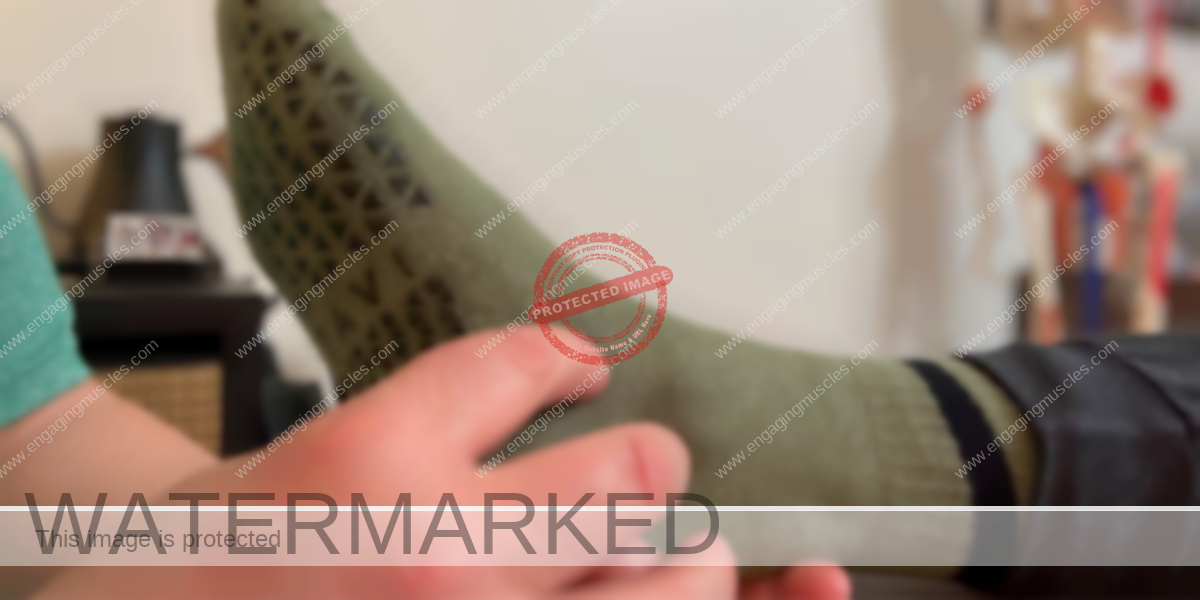After explaining navicular drop, the podiatrist did what most experts in podiatry do: He recommended orthotics for her fallen arch.
The woman who had just been told that her arch was collapsing didn’t give in to the stress of the situation. Instead, she said, “I don’t know what I don’t know. So, I’m not going to rush into getting orthotics.”By not buying into the podiatrist’s (predictable) recommendation, she saved herself years of fragility.
If she had taken the podiatrist’s advice to heart, eventually, her feet would be so weak she wouldn’t be able to walk around her house without arch supports.

Your tibialis posterior attaches to nine of the twenty-eight bones that make up your foot.
The only muscle that comes close to that amount of attachment is your extensor digitorum longus, with eight, two at the ends of each of your four toes.Due to its relationship to your arch and the number of attachments it provides, your posterior tibialis muscle is uniquely designed to offer substantial internal support.
What Podiatrists Won’t Tell You When They Want To Sell Orthotics For Navicular Drop
To have a navicular drop, your tibialis posterior and tibialis anterior muscles are underperforming.
Having said that, I don’t want you to walk away from this thinking navicular drop is only due to those two muscles underperforming.
The truth: It takes an army of muscles to provide stability.
Your army of muscles has to be fully capable of providing stability to distribute weight evenly across your feet.
Unfortunately (and sadly), podiatrists aren’t the only practitioners who ignore underperforming muscles.
Ninety-nine percent of the experts who are licensed to work with your musculoskeletal system fail to recognize that muscles underperform.
Case in point: Most physical therapists pride themselves on understanding exercise. Before recommending exercises, they don’t consider that muscles are underperforming, and that’s a piece of the compensation (that’s cumulative).
If physical therapists recognized pre-existing compensation, most wouldn’t have the skill set to differentiate a tight muscle from an underperforming muscle. Of course, they also wouldn’t know which muscles are capable of performing their role to the best of their ability.
The bottom line: For the reasons just mentioned, not everyone who goes to physical therapy functions better than before the pain or injury.
Note to reader: For more information on one-size-fits-all exercises in physical therapy, see numbers ten and eleven in the list below.
You can’t have an underperforming muscle without a tight muscle.
After reading the previous sentence, you may be wondering what comes first, the tightness or the weakness.
You feel tight muscles. But it’s the underperforming muscles (you can’t feel) that are first.
If everything goes according to what your brain has figured out for you, the tightness restricts your range of motion and protects you from an injury.
When you stretch or attempt to release muscles with deep tissue massage, the results are short-lived for a valid reason: To your mind, stretching and releasing muscles feels good at the moment.
I would imagine stretching and releasing muscles feels productive. If it didn’t, you wouldn’t be doing it.
Regardless of how good addressing muscle tightness feels in the moment, without stability, your brain increases tightness to protect (you from yourself).
While I’m on the subject of muscle tightness compensating for weakness, when podiatrists recommend calf stretches for plantar fasciitis, they don’t know which of the six muscles that make up your posterior calf are tight, which muscles are underperforming, or even, which muscles are performing their role to the best of their ability.
In other words, they are guessing. As it turns out, a podiatrist’s guess is as good as yours.
-
- Podiatrists are (only) qualified to address feet. That’s it.
- When a navicular bone drops on one foot, you don’t get one orthotic—you get a pair.
- Your feet are designed to adapt to the ground. A podiatrist’s orthotics force your feet to adapt to their arch supports. The external support for your arches forces your feet to supinate (go against gravity) when they are supposed to pronate (go with gravity). For this reason, many people find podiatrists’ orthotics to be so uncomfortable during the “break-in period” that they end up tossing them in the closet, never to be worn again.
- Pronation consists of joint motions that allow your feet to initiate shock absorption. But pronation doesn’t stop at your feet. The joint motions consistent with pronation allow your body to go with gravity to absorb shock. The motions that start at your feet in the walking gait cycle end up going all the way up to your jaw. Note to reader: Now would be a good time to revisit numbers one and two on this list.
- Your heel (rear foot) is mechanically connected to your knee. When you have a podiatrist’s orthotic underfoot, the inability of your foot to pronate throws off the motion (and timing) of your knees, hips, spinal column, cranium, and jaw.
- Beyond conscious awareness, your brain prioritizes keeping your eyes level with the horizon. When you use podiatrists’ orthotics, your brain finds a workaround to compensate for raising the ground to meet your arches.
- When it comes to your feet, popular culture is full of misinformation (and disinformation). For example, when you go to a specialty running shoe store (or a college-educated) foot specialist, you are given the label of pronator or supinator. The basic principles of physics tell us that when the heel of your lead leg makes contact with the ground in the walking gait cycle, the ground delivers a punch. Then, not long after your heel makes contact with the ground, the big toe side of your foot makes contact with the ground. That’s when a second punch is delivered from the ground. When the punches land, your heel is driven from a position of supination to pronation. Before colliding with the ground, your front foot follows what your heel did (pronation). When your front foot collides with the ground, your front foot supinates. So, truth be told, you aren’t a pronator or a supinator. But rather, a pronator and a supinator. In other words, by the time your entire foot makes contact with the ground in the walking gait cycle, your foot has pronated and supinated.
- The vast majority of running shoes are based on pseudoscience, making it extremely difficult to find shoes that complement how your feet function.
- Until muscles are capable of performing to the best of their ability, muscles will continue to be tight. If you’ve wondered why the feel-good feelings of stretching and releasing muscles with deep tissue massage are short-lived, it’s because your brain recognizes that nothing has been done to address the underperforming muscles.
- Until the underperforming muscles function to the best of their ability, exercises that involve motion don’t increase the strength of those muscles. Note to reader: Isometric exercise strengthens muscles without moving. What most physical therapists don’t realize is this: Muscles that are functioning to the best of their ability get stronger with the one-size-fits-all movement-based exercises that are commonplace in physical therapy. Meanwhile, the underperforming muscles continue to underperform. If you’re thinking that you felt stronger after physical therapy, it’s entirely possible to feel stronger (when compensation increases). Your brain is hard-wired to protect. So, on every repetition, the control center between your ears figures out a way to compensate for the pre-existing instability that wasn’t addressed before the exercises were introduced. Again, not everyone who goes to physical therapy functions better than before the pain or injury.
- Compensation is cumulative. Note to reader: Now is a good time to read number ten again.
- You don’t know what you don’t know.
To work with me online or at my office, use the contact page.


